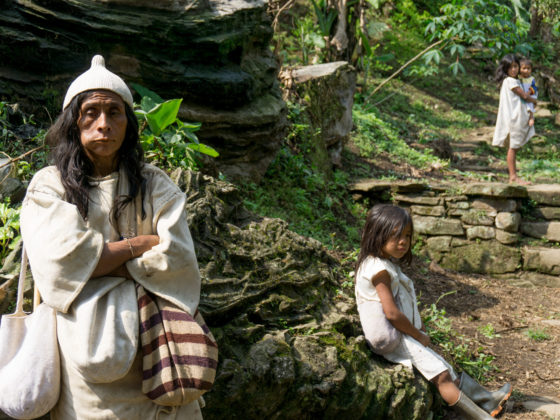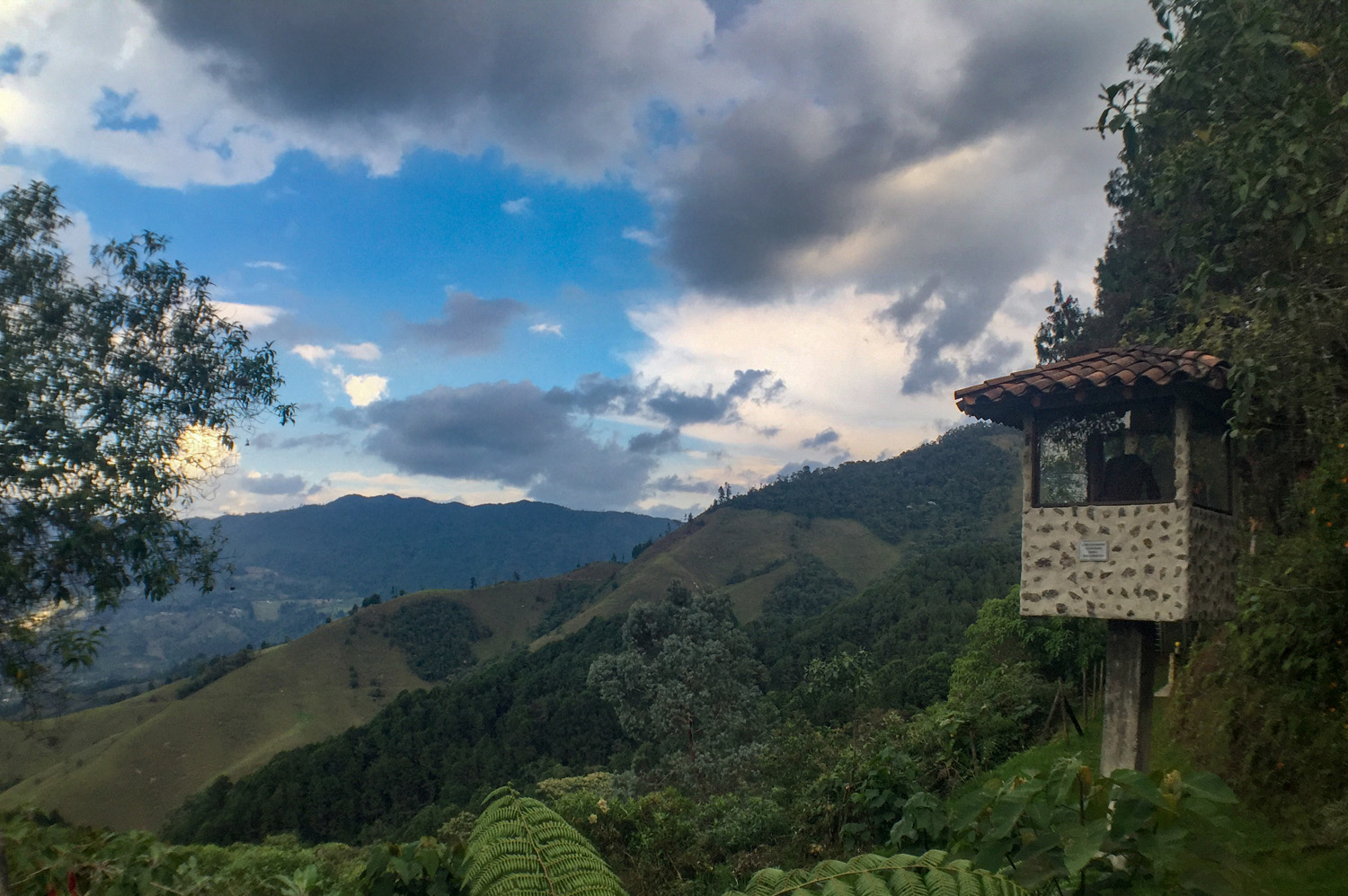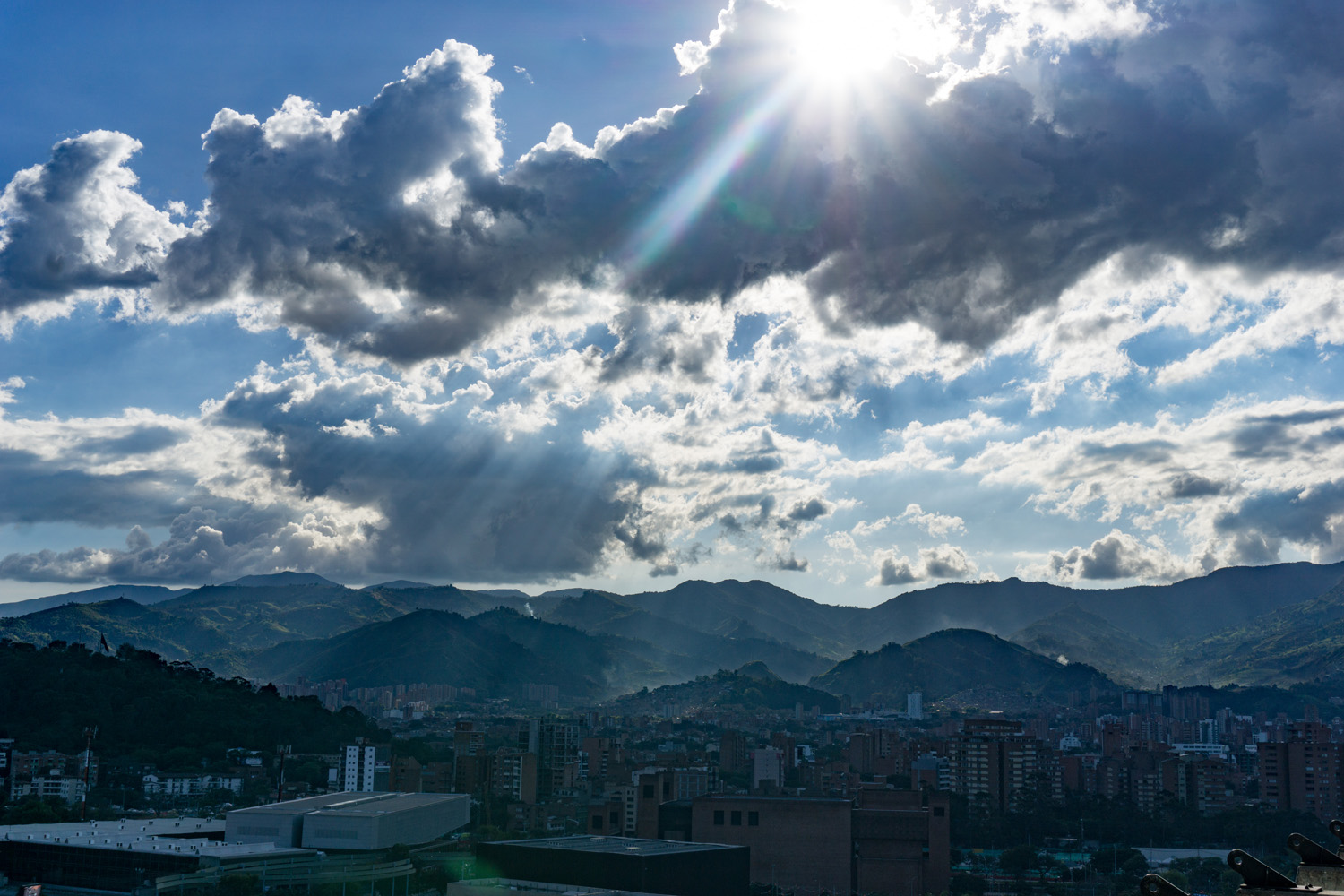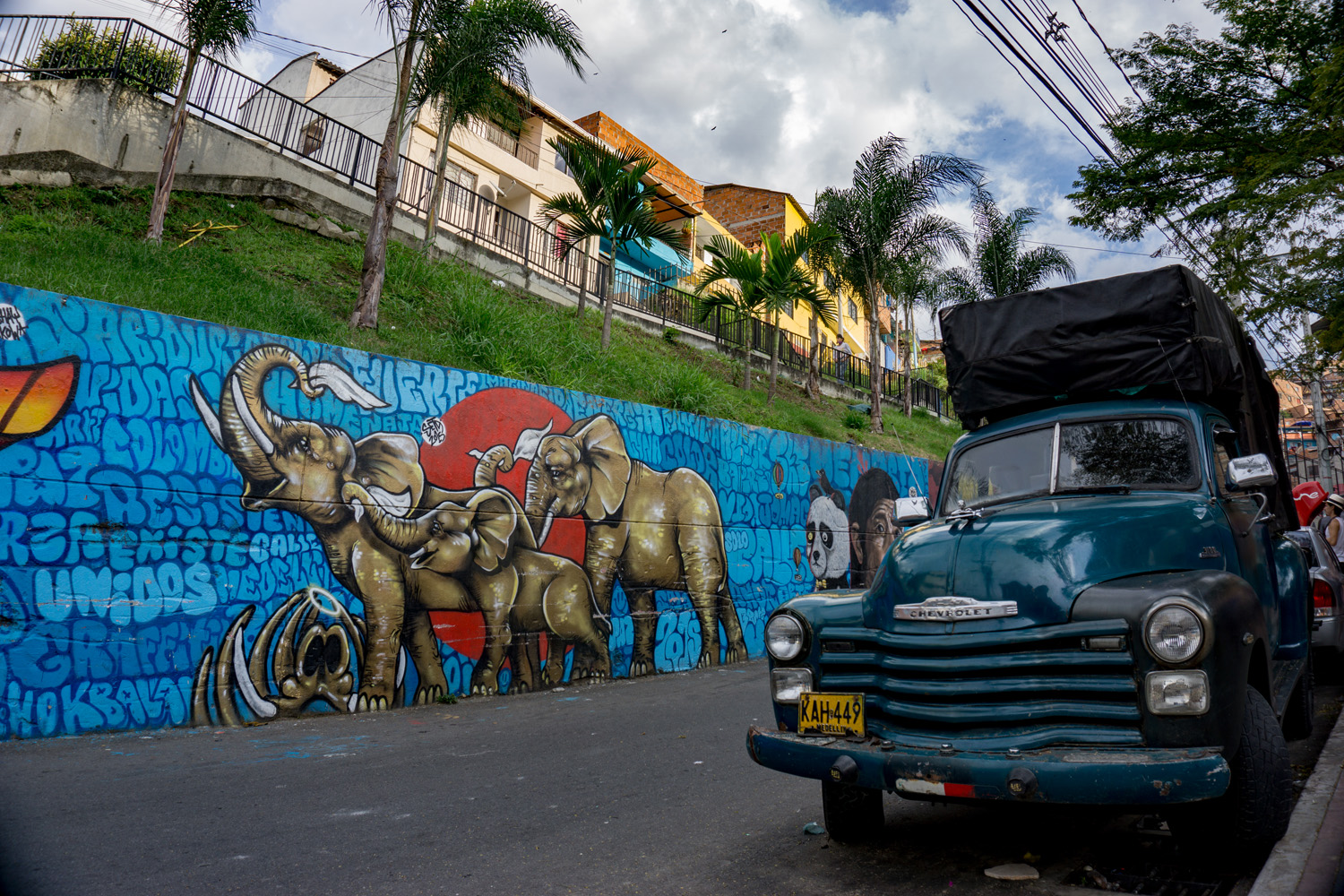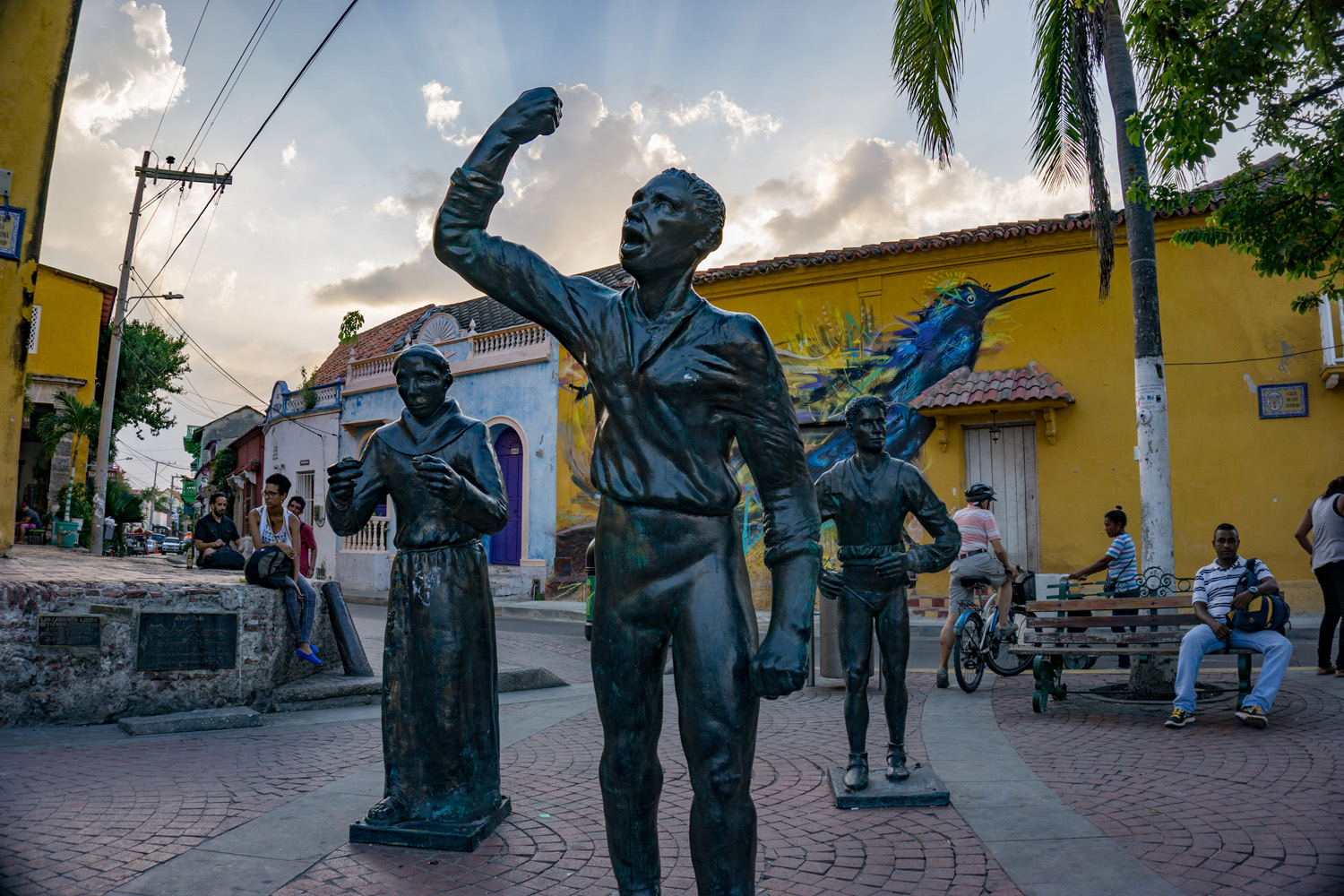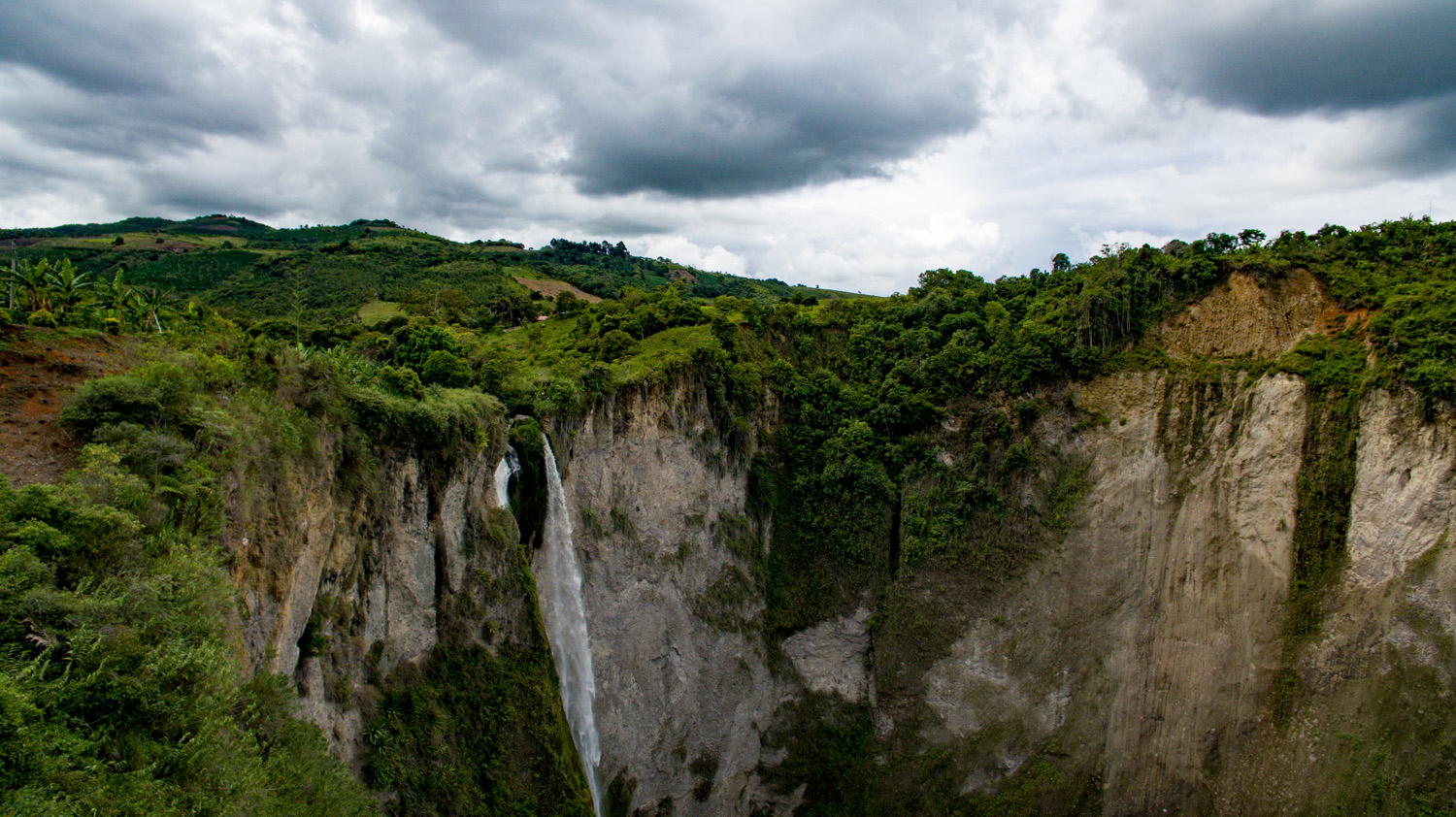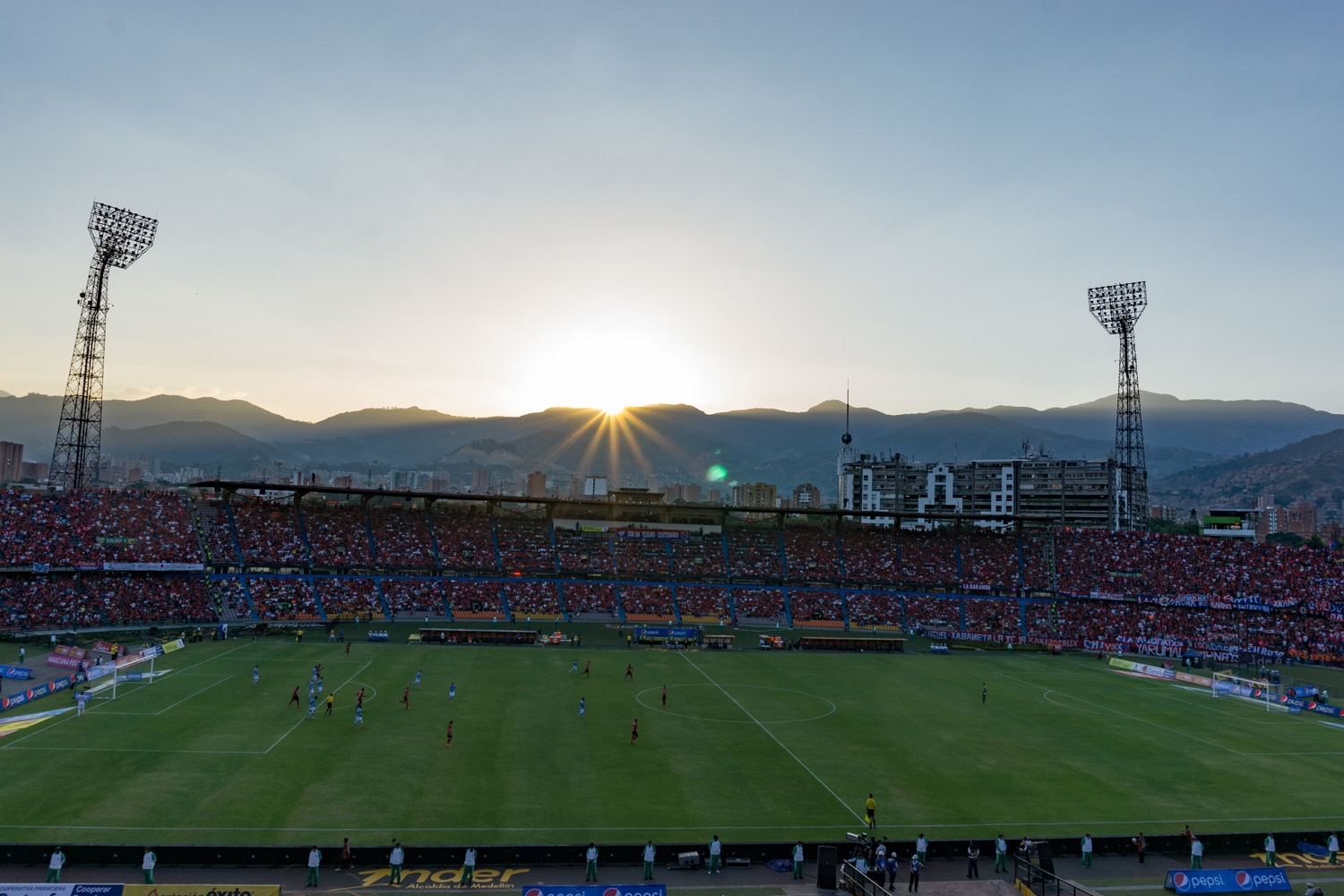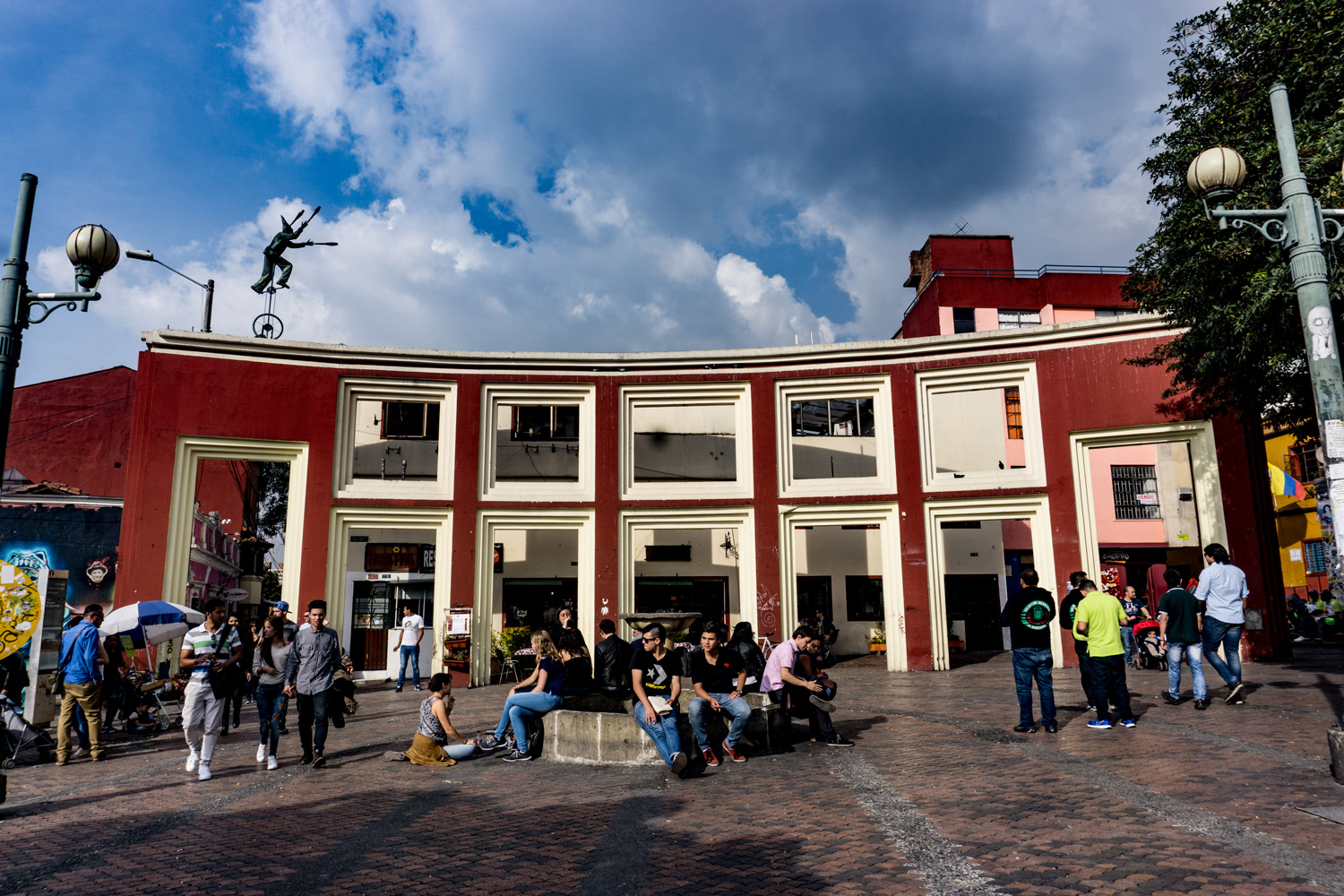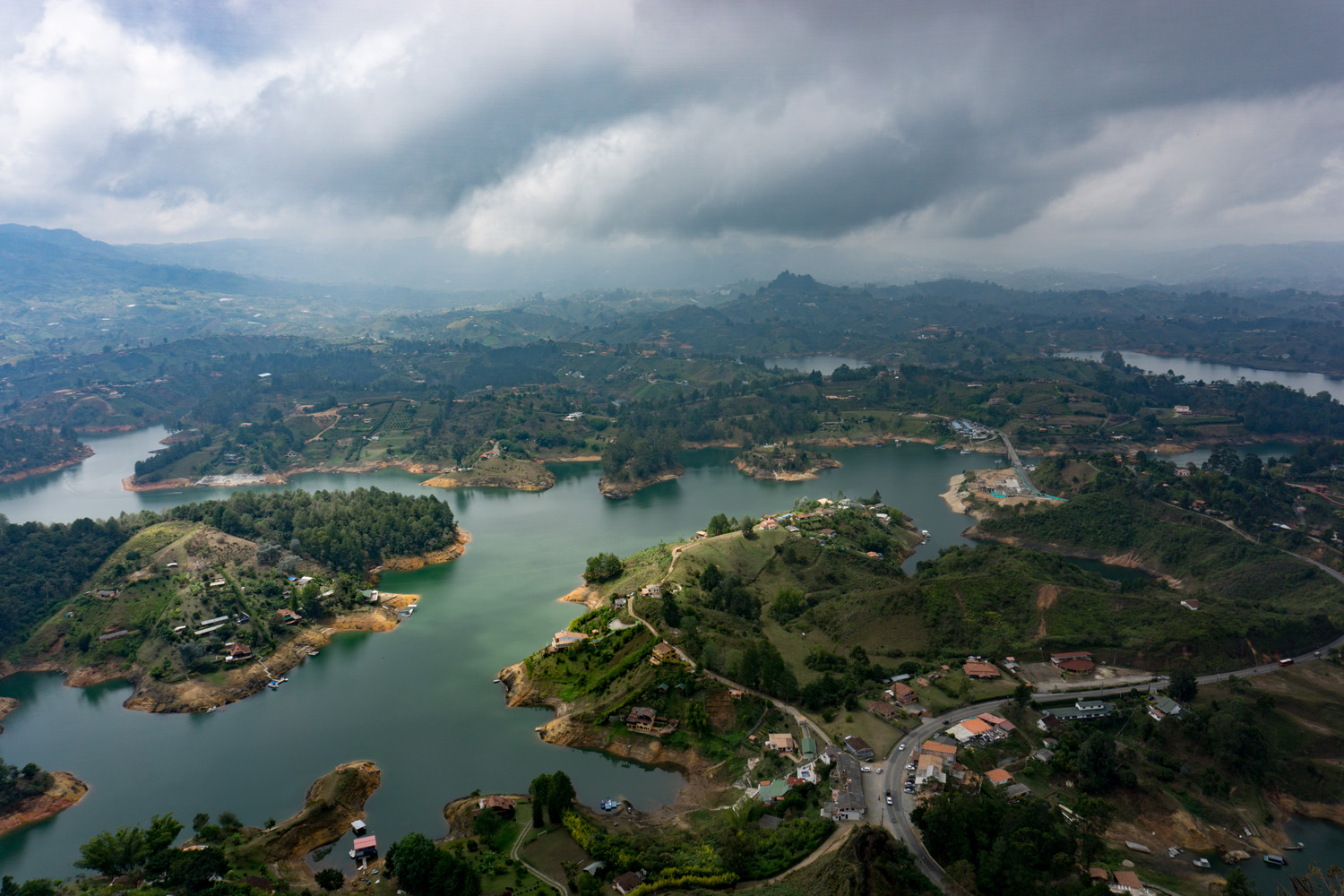IT WAS ONLY MY SECOND day in Medellín, Colombia when a group of students from my Spanish school planned a day trip to explore the area. Apparently, they heard about a scenic group of hiking trails and waterfalls along the Aburrá valley high above Medellín. They arranged a hike, and I joined in, anxious to see more of this interesting place.
We took a local 10-seater bus heading up to Arenales, a community which is just a short 20-minute drive up the mountain range. From there, we walked towards a path leading through the hills. Within minutes, we were surrounded by emerald-green rolling pastures, which quickly descended into a quiet, tree-lined river valley. We heard the faint sound of surging water in the distance – it was a 30-foot waterfall gushing with crystal clear waters into adjacent pools. What a spectacular sight! We stopped and admired the view before we trudged onward to find the second waterfall higher up the range. Two hours later, we were deep in the woods, with no sign of the falls. We were lost and had to decide what are next move would be. We heard voices off in the distance and decided to follow them, in hopes of navigating back to our original path.
